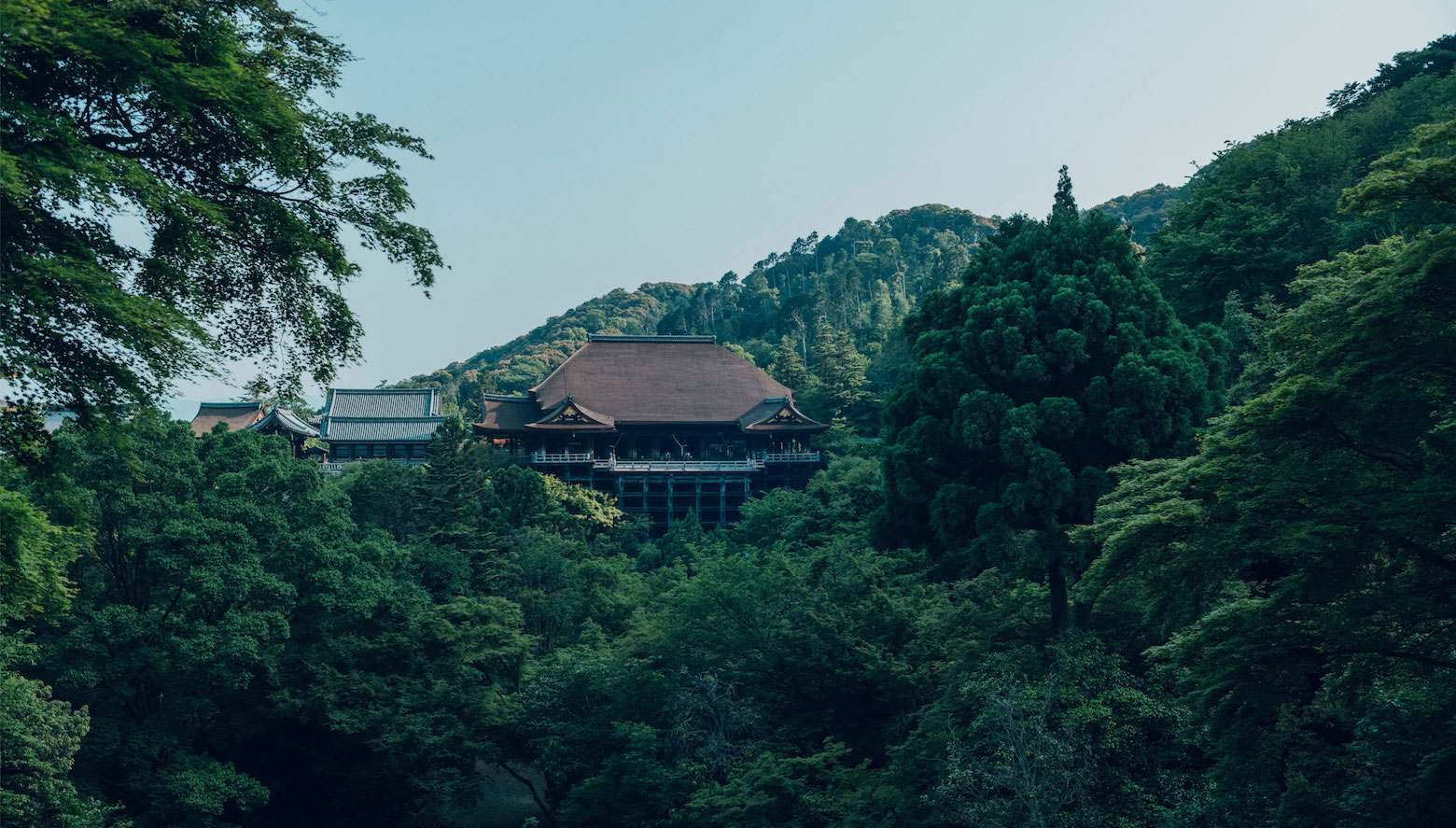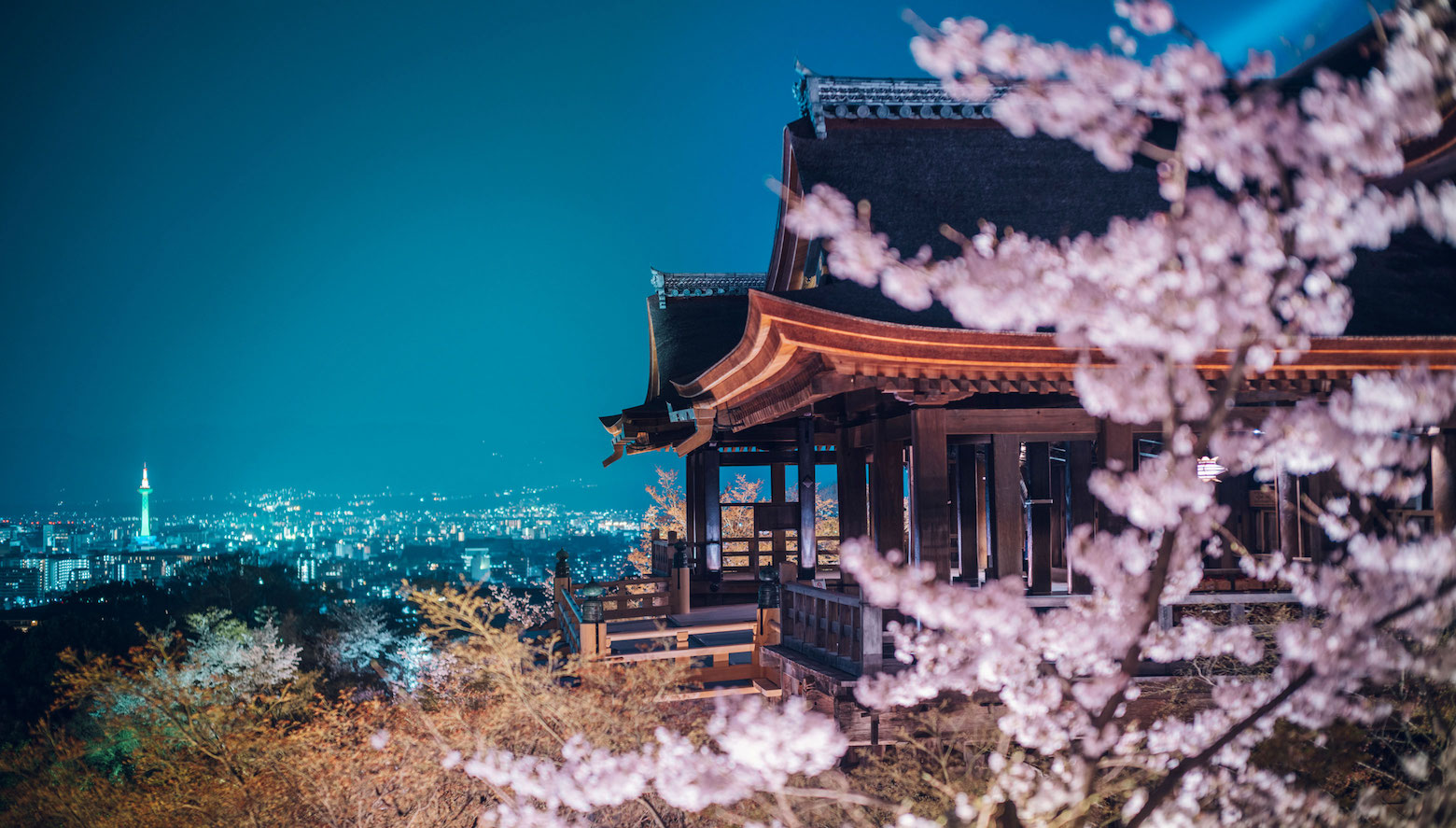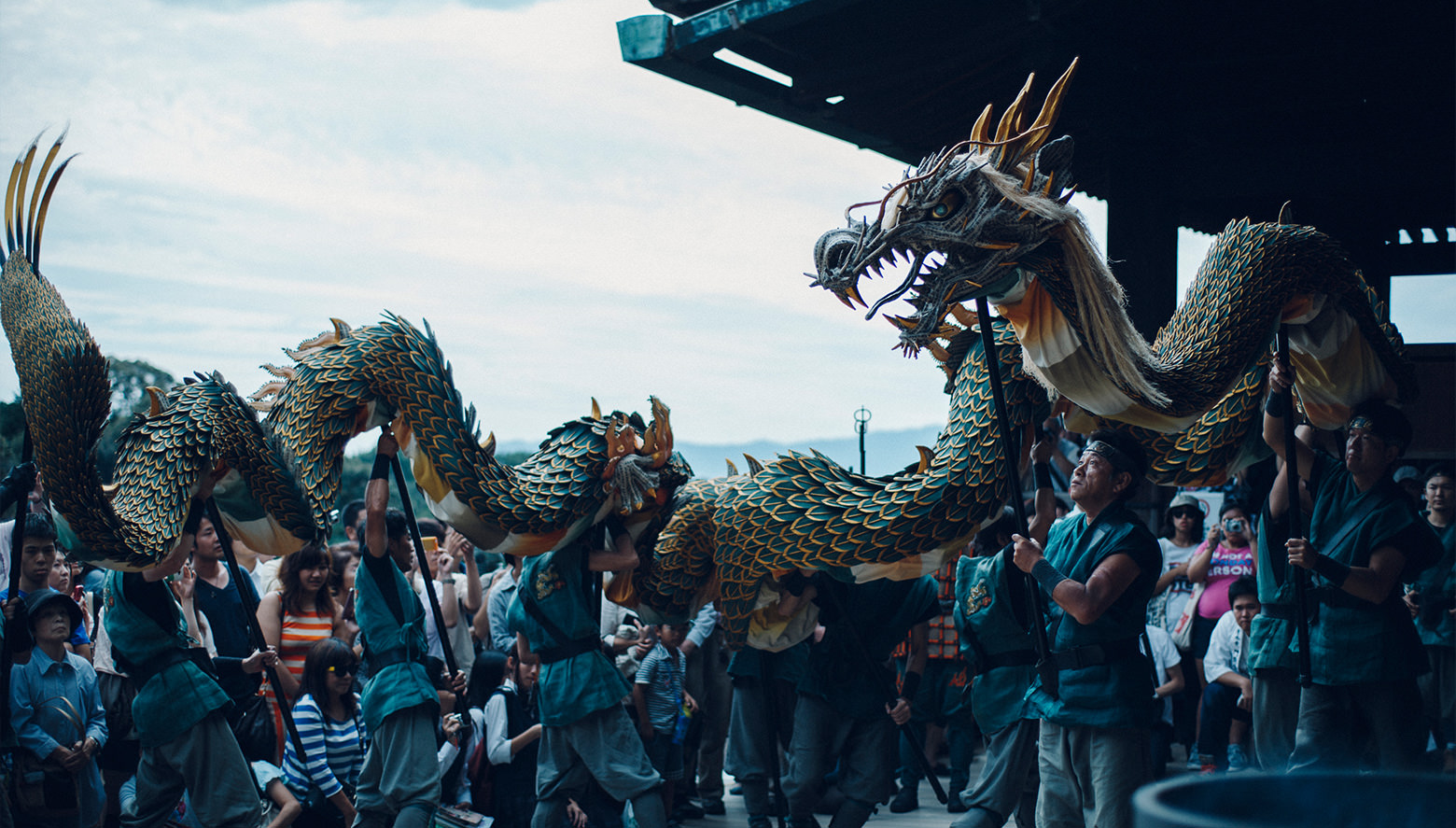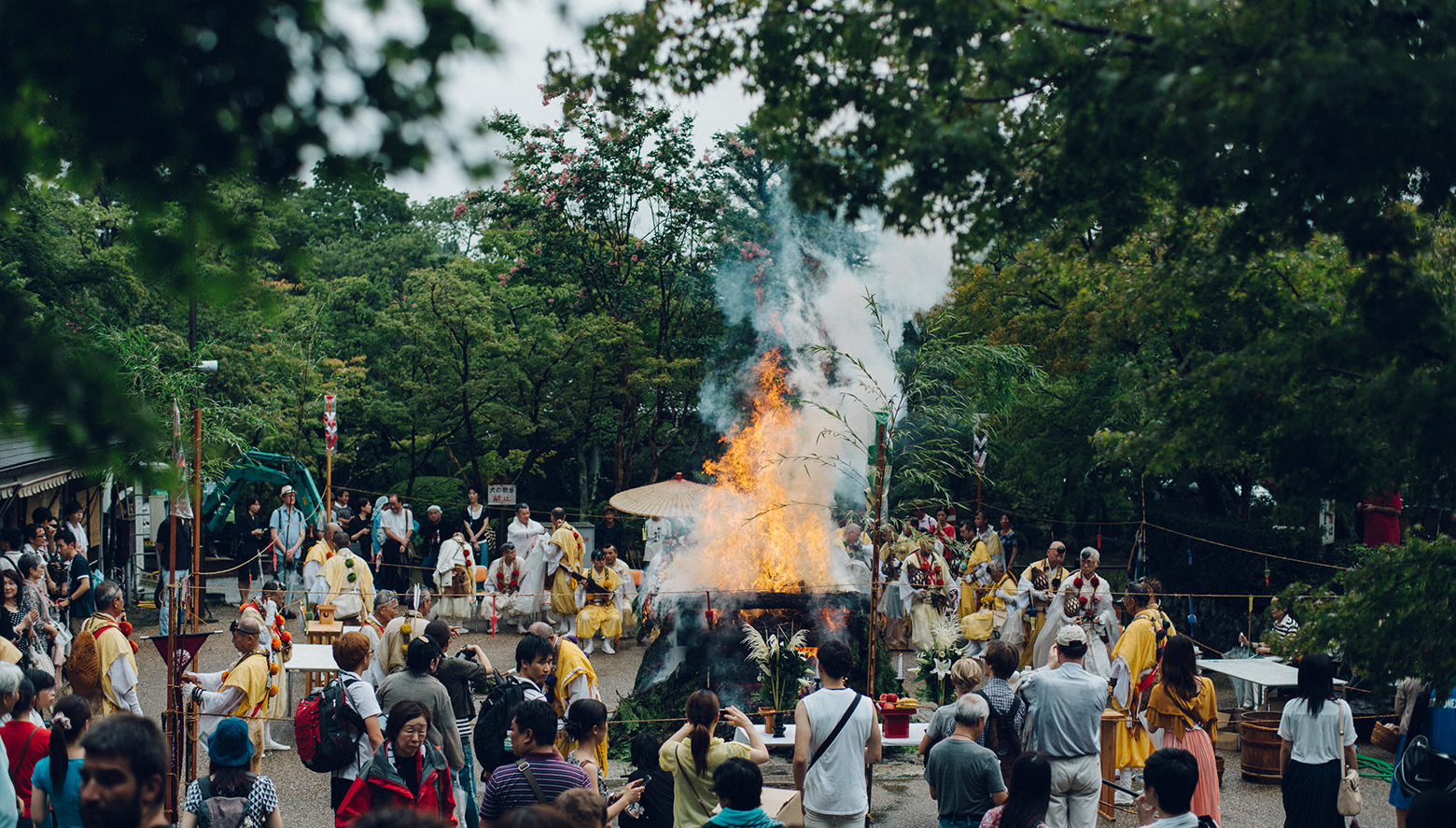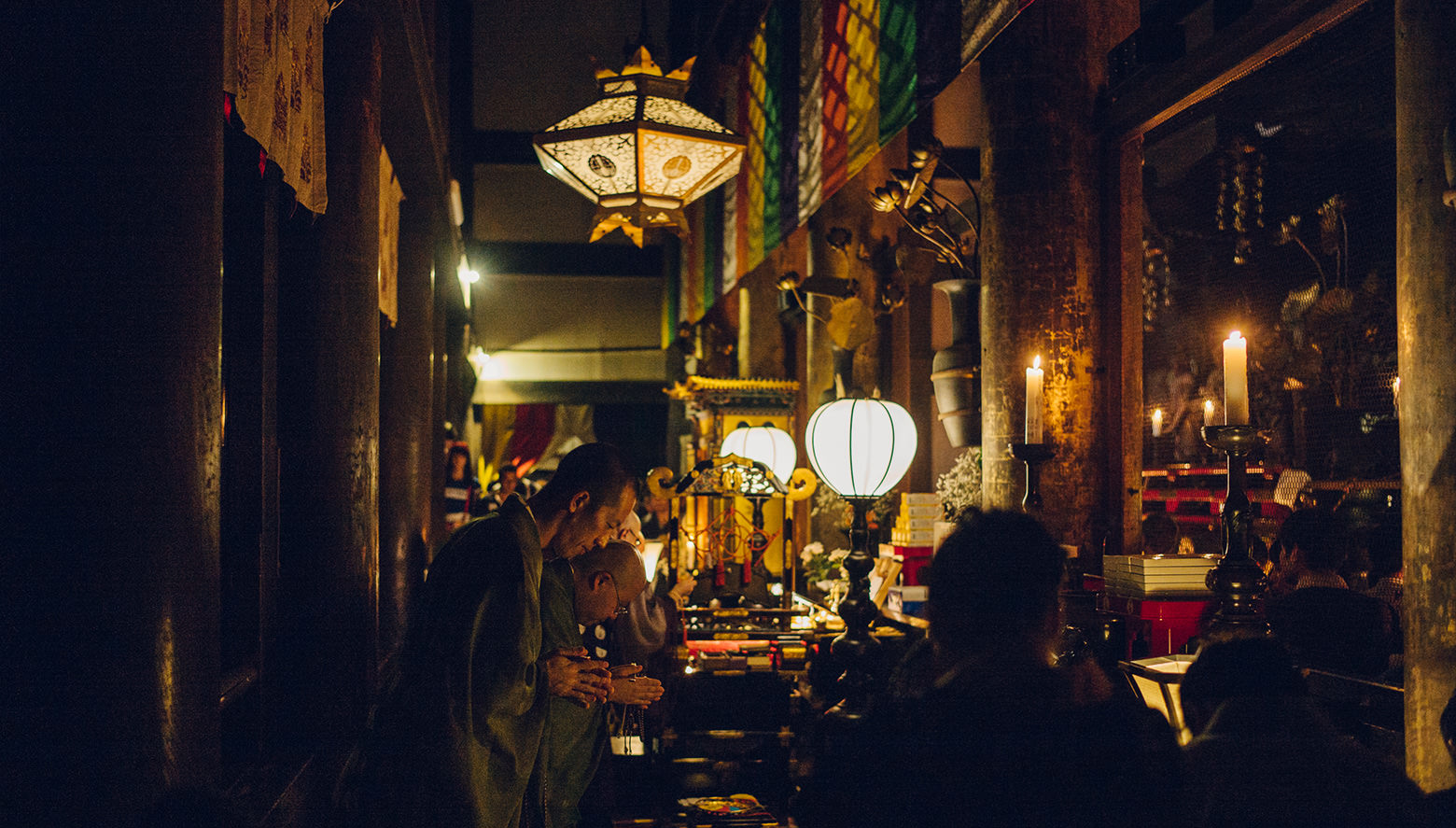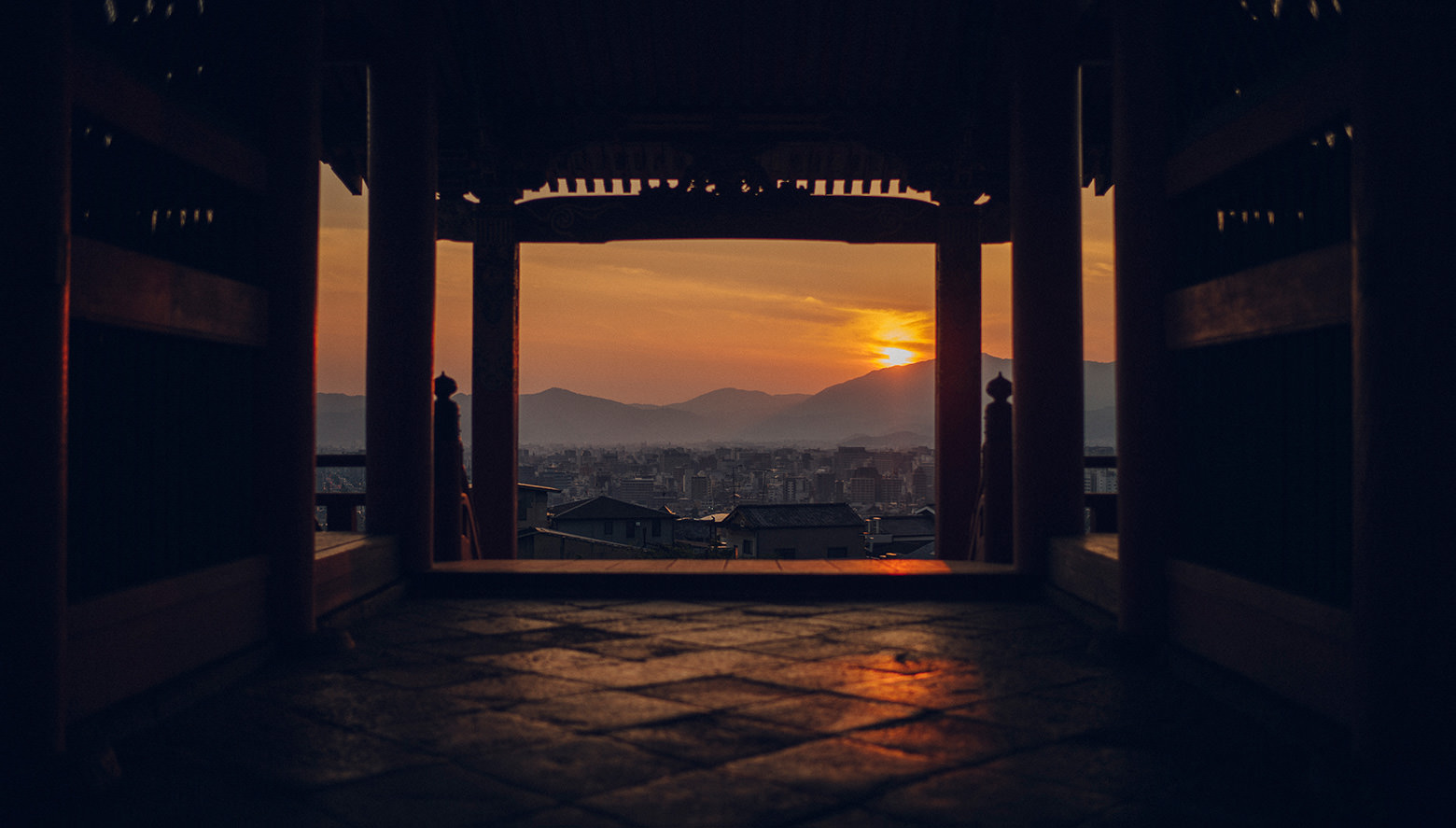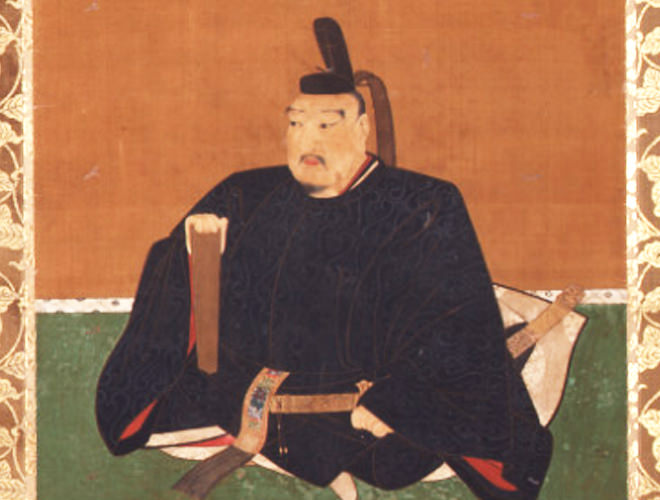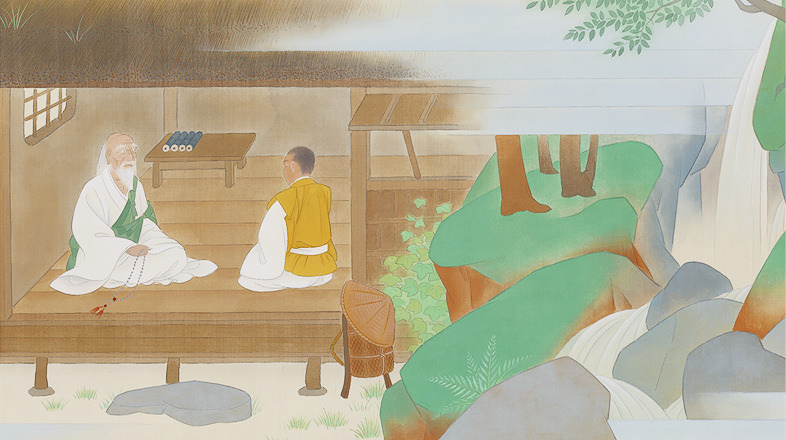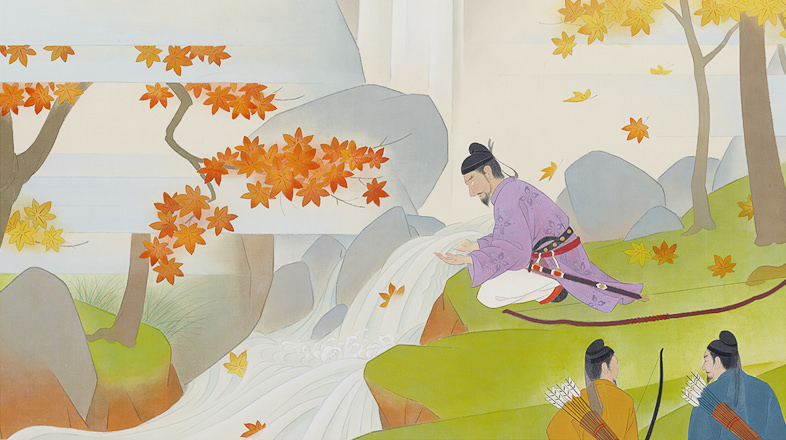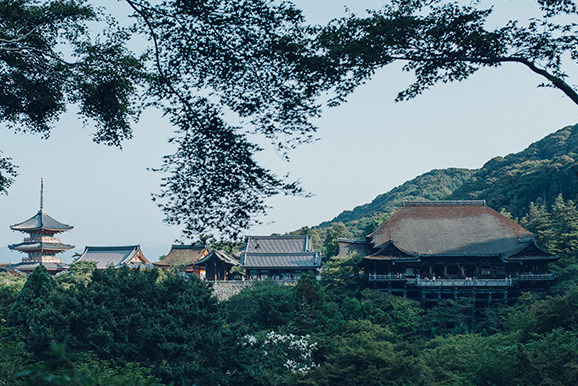I
LANDSCAPES
SEASONAL COLORS EMBELLISHING
THE KANNON REIJO
SEASONAL COLORS EMBELLISHING
THE KANNON REIJO
Halfway up Mt. Otowa, one of the peaks in Kyoto’s Higashiyama mountain range,
stands Kiyomizu-dera Temple, which is abundantly blessed with nature. It provides landscapes to match each season,
including cherry blossoms in spring, lush green in summer, colored leaves in autumn, and snowscapes in winter.
The mountains, which surround the temple buildings, reveal many different views from dawn till dusk and create a stunning landscape
in harmony with the beautiful scenery of the ancient city. As the pure water constantly wells up,
the scenery also changes its appearance every moment. Through the regular Buddhist events and special viewings,
visitors can feel Kannon’s compassion and acquire an even better understanding of the deity.
II
UNFOLDING THE HISTORY OF KIYOMIZU
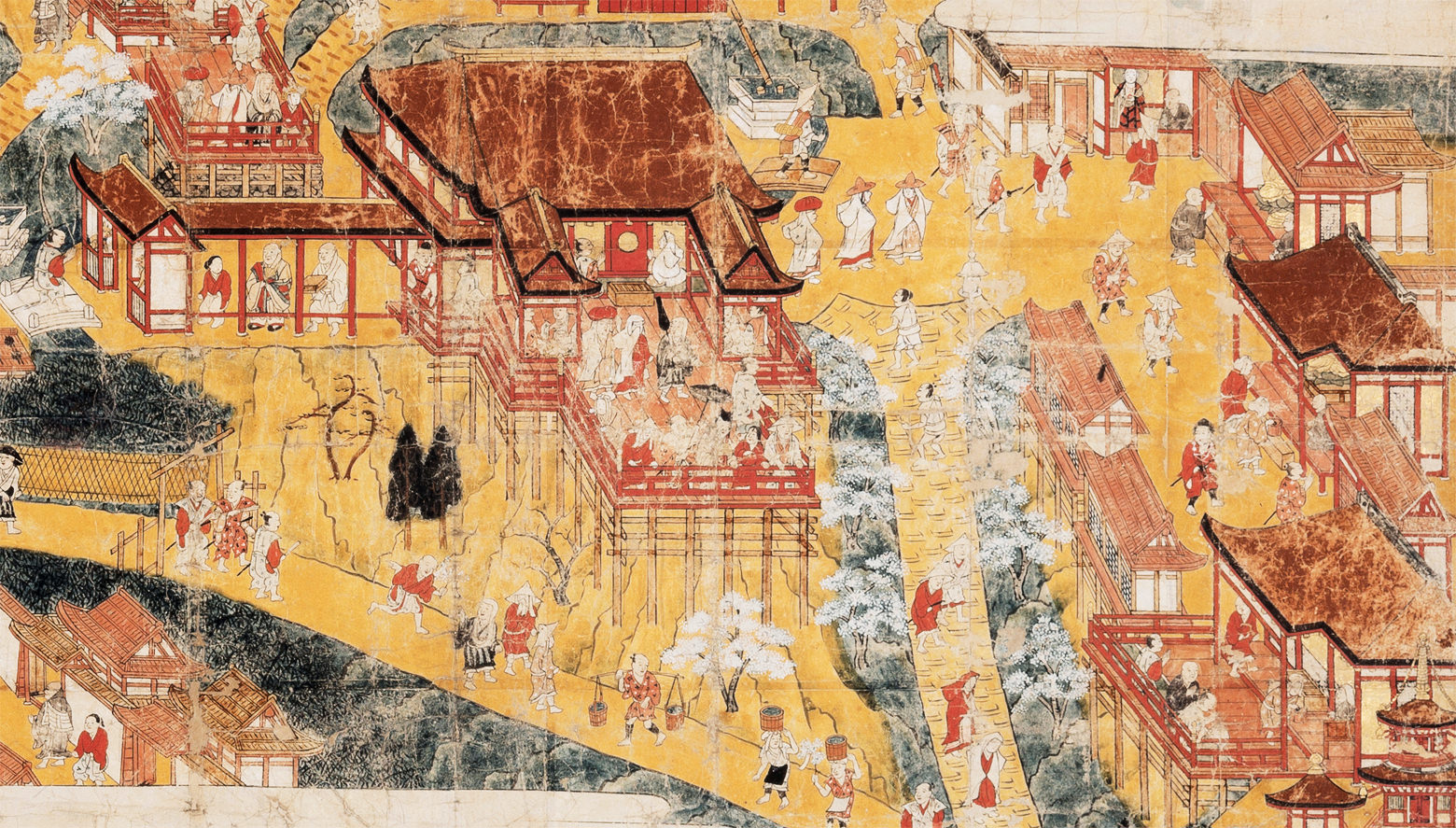
HISTORY
THE HISTORY OF KIYOMIZU-DERA TEMPLE
THE HISTORY OF
KIYOMIZU-DERA TEMPLE
Otowa-san Kiyomizu-dera Temple was founded in 778. Its history dates back over 1250 years. As a holy place where the deity Kannon’s great compassion prevails, the temple has long been open to citizens of all classes. History books and literature describe how large numbers of people have enjoyed visiting Kiyomizu-dera Temple throughout its history.
Among the grounds, which spread over 130,000 square meters along the mid-slope of Mt. Otowa in the eastern part of Kyoto, stand thirty Buddhist temple buildings, including the national treasure Main Hall and many other important cultural properties. Since its foundation, most of the buildings have been destroyed by fire over ten times. Thanks to the assistance of the temple’s faithful, they were rebuilt time and time again. Most of the present buildings were reconstructed in 1633. In 1944, Kiyomizu-dera Temple was registered on the UNESCO World Cultural Heritage List as one of the Historic Monuments of Ancient Kyoto.
KANNON REIJO: WHY THIS TEMPLE IS SACRED
KANNON REIJO:
WHY THIS TEMPLE IS SACRED
-
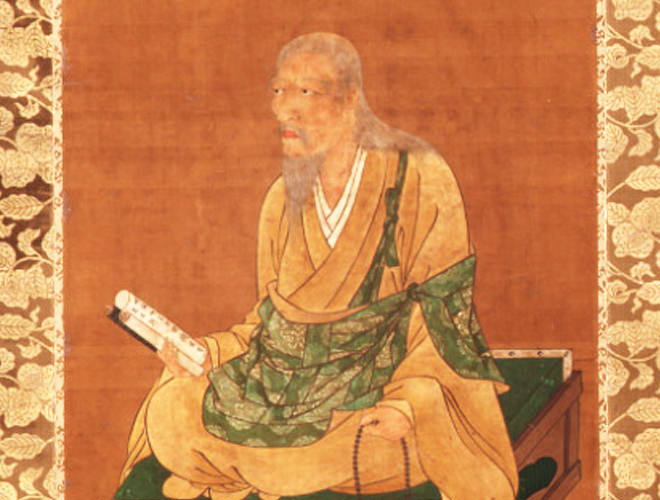
Gyoei-koji
-
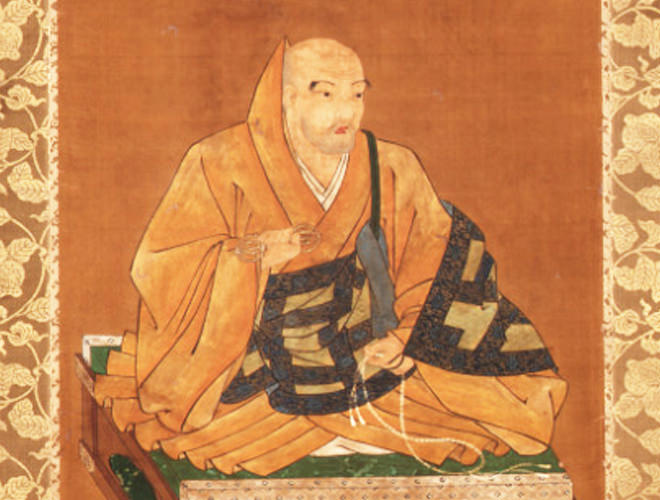
Kenshin
According to the book, The Origin of Kiyomizu-dera Temple, an old man in white appeared in a dream to Kenshin*, a monk who had led an ascetic life in Nara, and gave him this revelation: “Depart from this southern region.” Inspired by this vision, Kenshin walked north and discovered a pure, gushing waterfall in Mt. Otowa, Kyoto. He also met the priest Gyoei-koji, an old hermit who built himself a hermitage and practiced asceticism near the waterfall. Gyoei-koji granted Kenshin a sacred tree worthy of being the material from which a Kannon statue could be carved. “I’ve been waiting for you. I am heading east for Buddhist ascetic practices. Please carve this tree into a statue of the thousand-armed Kannon and build a temple for Kannon in this sacred place.” Gyoei-koji left Kenshin with these words and disappeared. Kenshin realized that this place was a magnificent holy ground. Later Kenshin kept watch over Gyoei-koji’s hut and maintained the peace and security of the entire sacred area. The crystal spring that Kenshin discovered was later called Otowa Waterfall, from which pure water continues to flow even today.
Left: Sakanoue-no-Tamuramaro, Right: Heisei Version of the Picture Scroll Depicting the Origin of Kiyomizu-dera Temple
Two years later, a warrior called Sakanoue-no-Tamuramaro, who had come to Mt. Otowa to hunt deer came across Kenshin at Otowa Waterfall. Tamuramaro found Kenshin to be a man of wide knowledge and high virtue. Feeling deep reverence for Kenshin as a great mentor, Tamuramaro offered to assist Kenshin with his mission to establish a temple. With his wife Miyoshino Takako, Tamuramaro built a temple to enshrine the Eleven-Headed Thousand-Armed Kannon Bodhisattva as the main object of worship and named it Kiyomizu, meaning “pure water,” after the clarity of the waterfall.* Kenshin practiced mountain Buddhism at Kojima-dera Temple in Nara, in which Kannon Bodhisattva is enshrined. He later changed his name to Enchin.
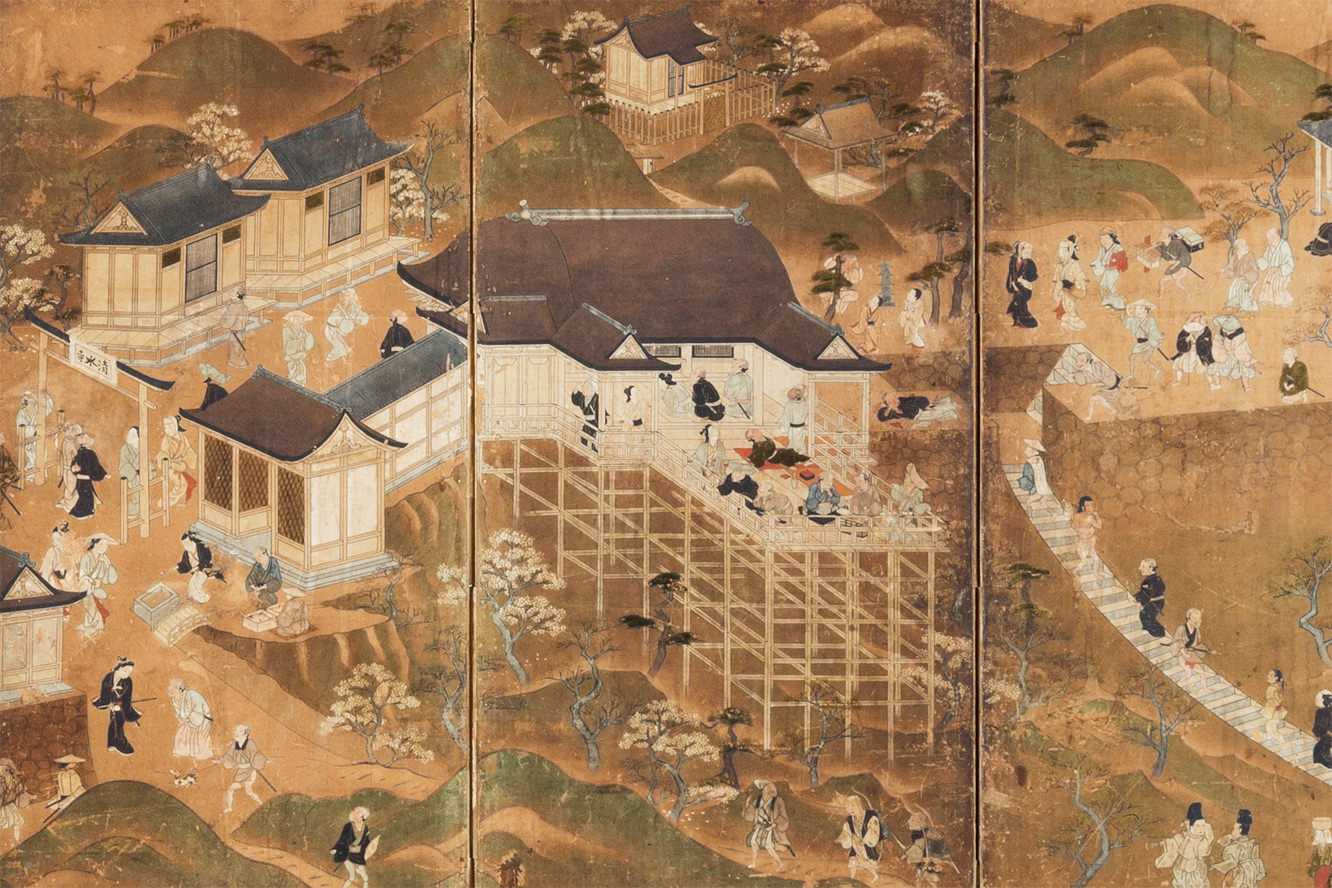
Folding Screen with the Painting of Amusements in Kiyomizu (17th century)
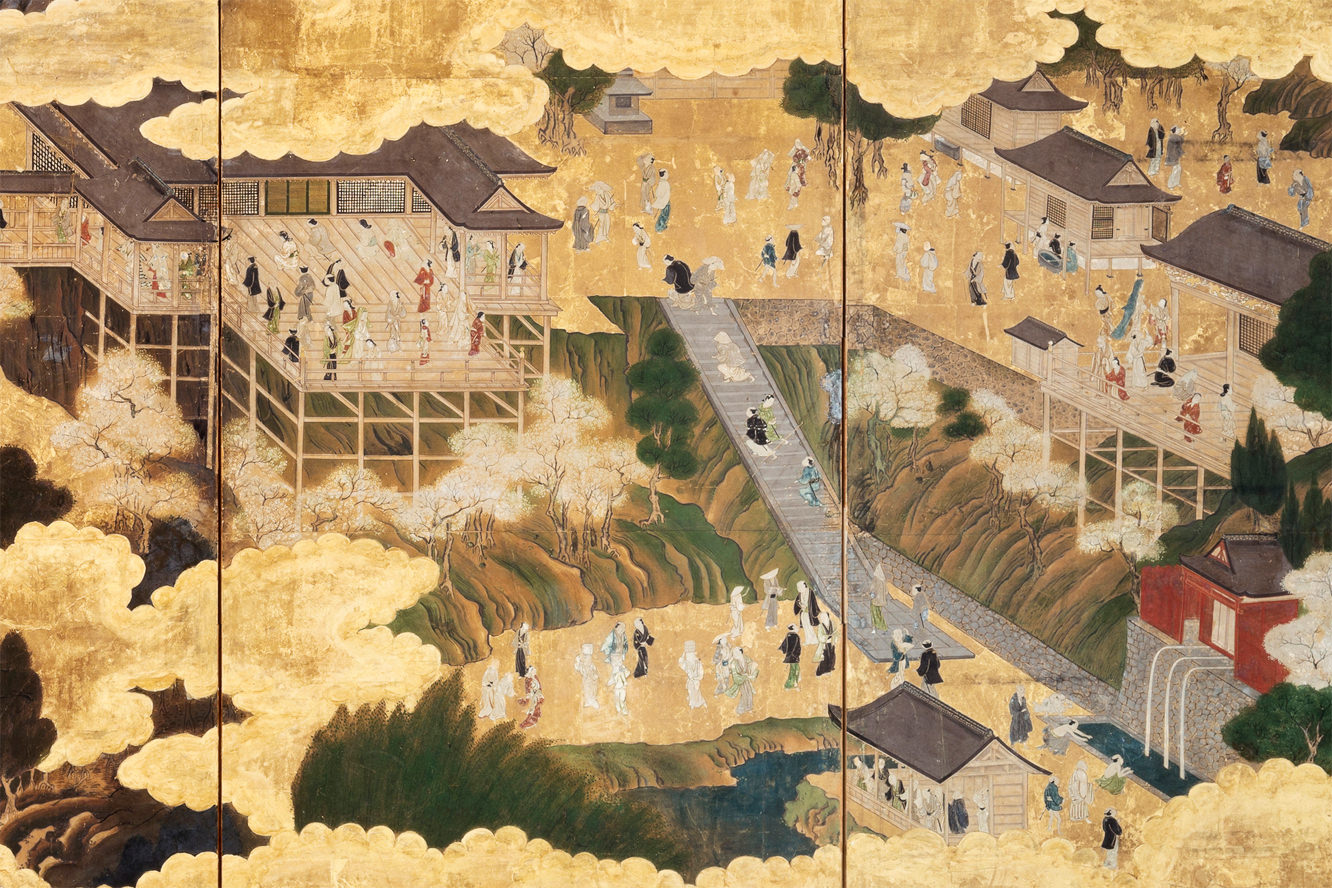
Folding Screen with the Painting of Kiyomizu-dera Temple Grounds (17th century)
THE KITA-HOSSO SECT: FOUNDED WITH THE GOAL OF
“BUDDHISM THAT SOCIETY NEEDS”
THE KITA-HOSSO SECT:
FOUNDED WITH THE GOAL OF
“BUDDHISM THAT SOCIETY NEEDS”
-
Kiyomizu-dera Temple is a temple of the Kita-Hosso sect. After it was opened, it adopted the doctrine of the Hosso sect, one of the six sects of Nara Buddhism. In early modern times, Kiyomizu-dera was a branch temple of Kofuku-ji Temple (in Nara), the main temple of the Hosso sect. In 1965, Kiyomizu became the head temple of the Kita-Hosso sect, which was founded by Onishi Ryokei Wajo, then the temple’s chief abbot. Ryokei Wajo kept abreast of the turbulent social events of the era and had been seeking a new form of Buddhism that the future society would need. The name “Kita” Hosso means “Northern” version of the Hosso sect, as it began in Kyoto, located north of Nara.
Ryokei Wajo devotedly practiced the teachings of Kannon throughout his life with this mantra in mind: “Buddhism should contribute to society.” He believed that Buddhism had to carry out its responsibility to the public, and Ryokei Wajo himself also took on missions to work for the public good. He established nursing facilities for the elderly and started running children’s institutions. He also prayed for the souls of disaster victims and volunteered in reconstruction efforts.
As a Buddhist who survived times of war, Ryokei Wajo taught peace and kindly watched over the socially disadvantaged. Until he departed this life at the age of 109, he continuously preached the Kannon’s teachings. Now he is revered as the father of the Kiyomizu-dera Temple restoration. -
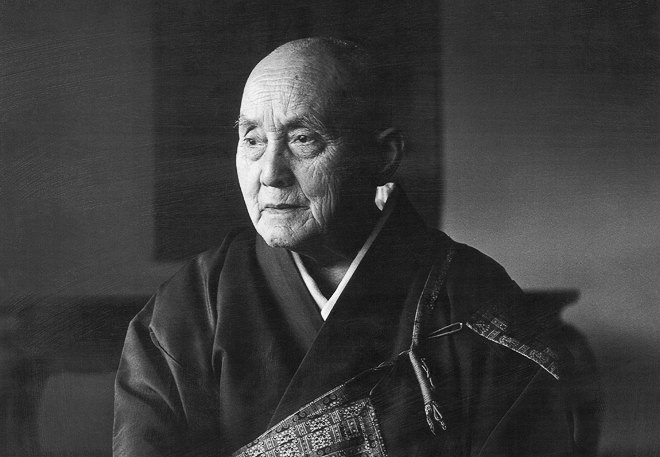
Ryokei Onishi WajoThe Restorer of Kiyomizu-dera Temple,
the main temple of the Kita-Hosso sect -
Kiyomizu-dera Temple is a temple of the Kita-Hosso sect. After it was opened, it adopted the doctrine of the Hosso sect, one of the six sects of Nara Buddhism. In early modern times, Kiyomizu-dera was a branch temple of Kofuku-ji Temple (in Nara), the main temple of the Hosso sect. In 1965, Kiyomizu became the head temple of the Kita-Hosso sect, which was founded by Onishi Ryokei Wajo, then the temple’s chief abbot. Ryokei Wajo kept abreast of the turbulent social events of the era and had been seeking a new form of Buddhism that the future society would need. The name “Kita” Hosso means “Northern” version of the Hosso sect, as it began in Kyoto, located north of Nara.
Ryokei Wajo devotedly practiced the teachings of Kannon throughout his life with this mantra in mind: “Buddhism should contribute to society.” He believed that Buddhism had to carry out its responsibility to the public, and Ryokei Wajo himself also took on missions to work for the public good. He established nursing facilities for the elderly and started running children’s institutions. He also prayed for the souls of disaster victims and volunteered in reconstruction efforts.
As a Buddhist who survived times of war, Ryokei Wajo taught peace and kindly watched over the socially disadvantaged. Until he departed this life at the age of 109, he continuously preached the Kannon’s teachings. Now he is revered as the father of the Kiyomizu-dera Temple restoration.
THE HINOKI WOODEN STAGE OF KIYOMIZU
THE HINOKI WOODEN STAGE
OF KIYOMIZU
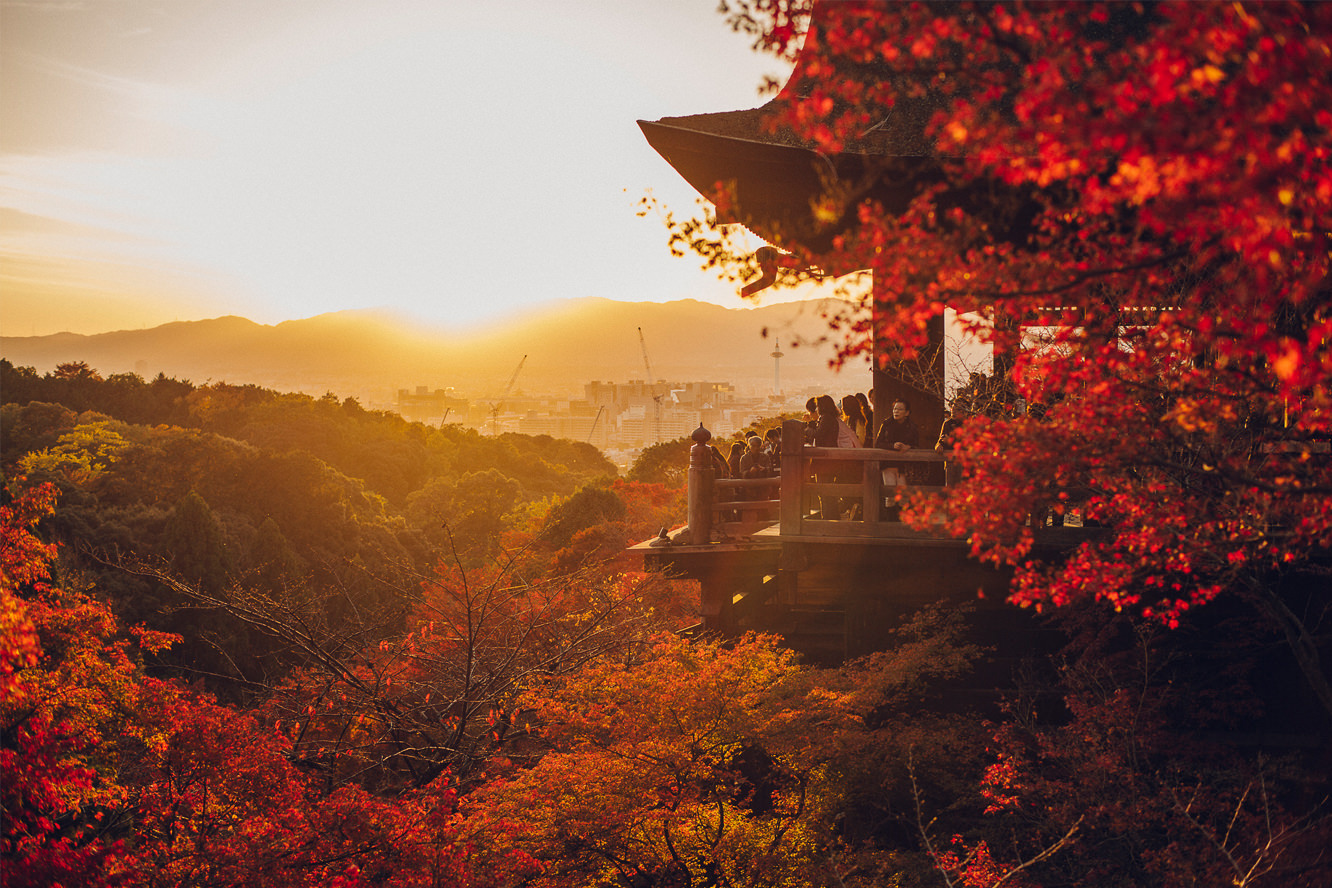
Kiyomizu stage
The broad Kiyomizu stage, which hangs over the front of the Main Hall, is the most renowned of all the structures in Kiyomizu. The spacious floor of the stage, with an area of approximately 200 square meters, was replaced with over 166 hinoki (Japanese cypress) boards during the restoration project which lasted 12 years from 2008. Its structure is supported by over 13 meter-high pillars from its foundation. The stage offers a stunning view of the whole city of Kyoto, whose beauty has long captivated many visitors.
“Standing on a hinoki stage” is the Japanese expression for “stepping into the limelight.” Although it is uncertain if the expression comes from the hinoki stage in Kiyomizu, the stage is used to dedicate performances to the Kannon on the occasions of Buddhist religious services.
III
THE STAGE AND ITS PURPOSES
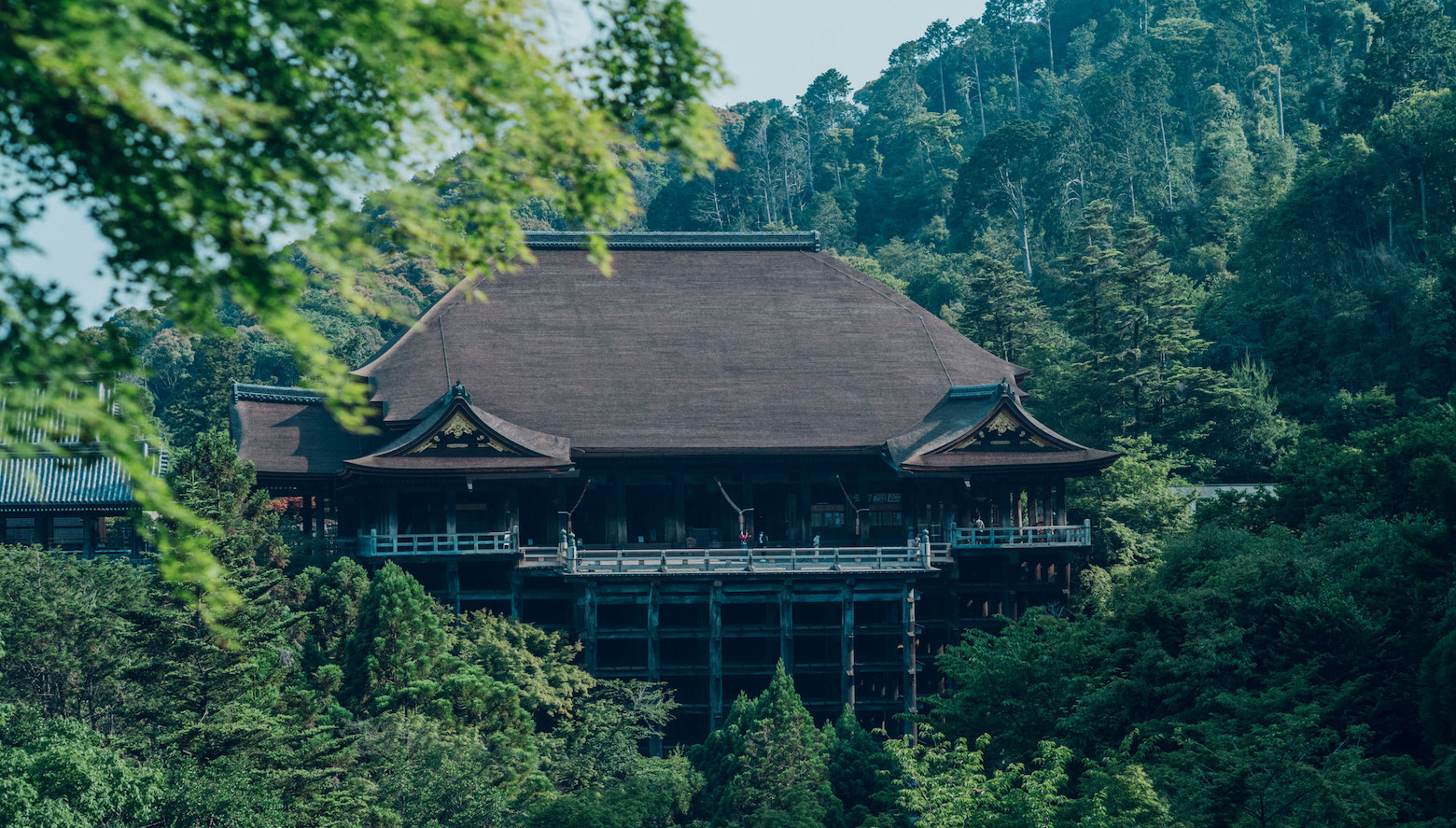
MAIN HALL
THE WOODEN STAGE ON THE CLIFF
THE WOODEN STAGE ON THE CLIFF
The Main Hall was built on a steep cliff using a traditional Japanese method of construction. The assembled pillars and rails work like a scaffolding and support the structure so firmly that it is highly earthquake-resistant even on its steep slope. Overhanging the hall is an imposing veranda, called Kiyomizu Stage. Its stands nearly 13 meters high, almost equal to a four-story building. The stage is supported by 18 pillars made from 400-odd-year-old zelkova trees, the largest of which is approximately 12 meters high and two meters in girth. These pillars are joined with a number of rails, which penetrate through each pillar and form joints to strengthen the overall structure without using a single nail. The present stage was reconstructed in 1633. Withstanding hundreds of disasters over the years, this traditional wooden structure continues to support the stage, which is always bustling with visitors.
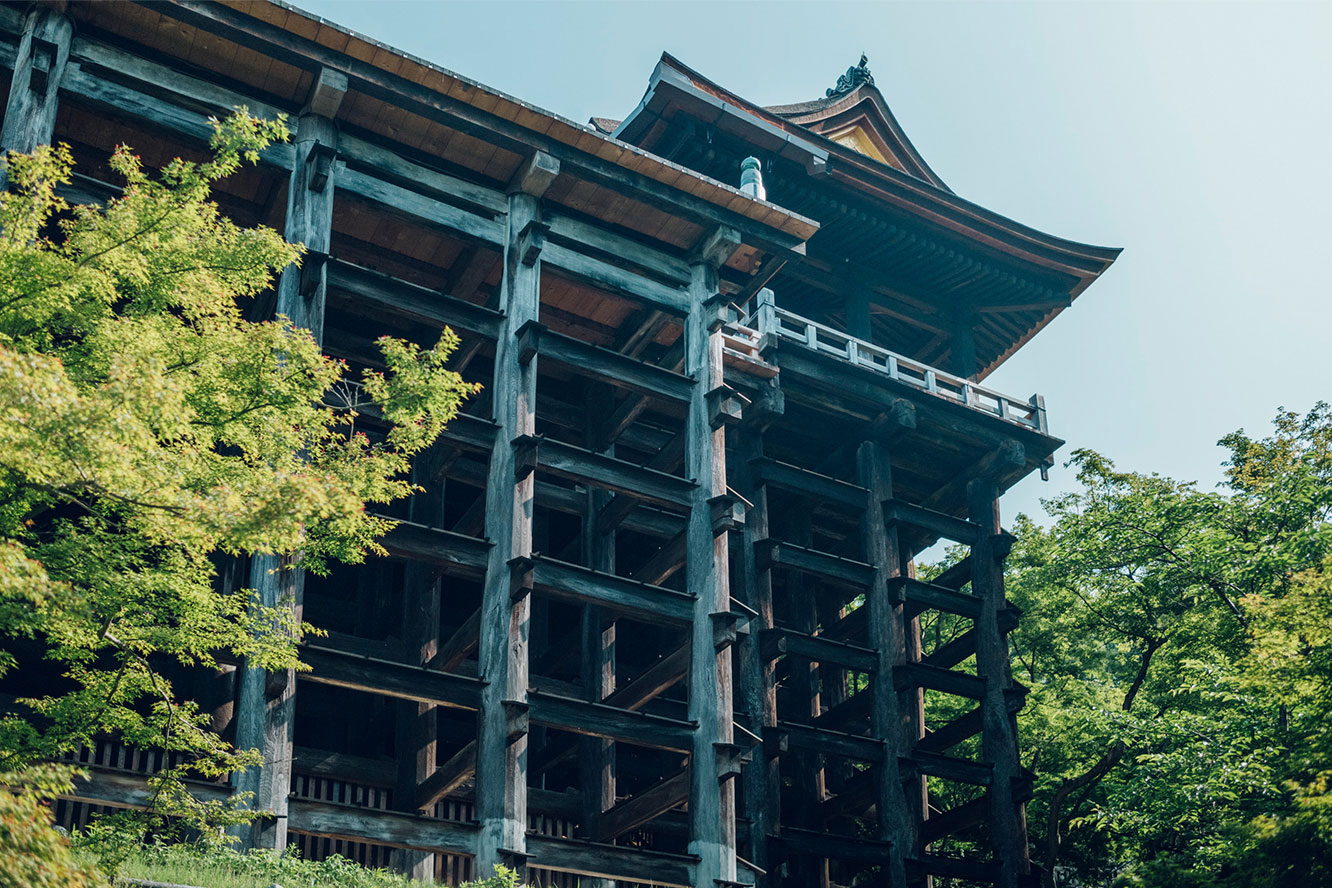
Kake-zukuri
PROVERB
The origin of a famous Japanese saying
The origin of a
famous Japanese saying
There is a popular Japanese saying, “to jump off the stage of Kiyomizu.” It means to make a bold decision and “take a plunge,” as if jumping off the stage protruding from the Main Hall which was built on the high, steep slope. This saying implies that the Kiyomizu stage has long been recognized as being representative of multistory construction throughout the country. As the temple has been faithfully visited by the folks as a holy place of Kannon, the custom of taking a bold leap down from the high stage with a prayer to the Kannon was once widely accepted. The Kiyomizu stage has continued to be a well-known attraction from then to now.
SACRED PERFORMANCES DEDICATED TO KANNON
SACRED PERFORMANCES
DEDICATED TO KANNON
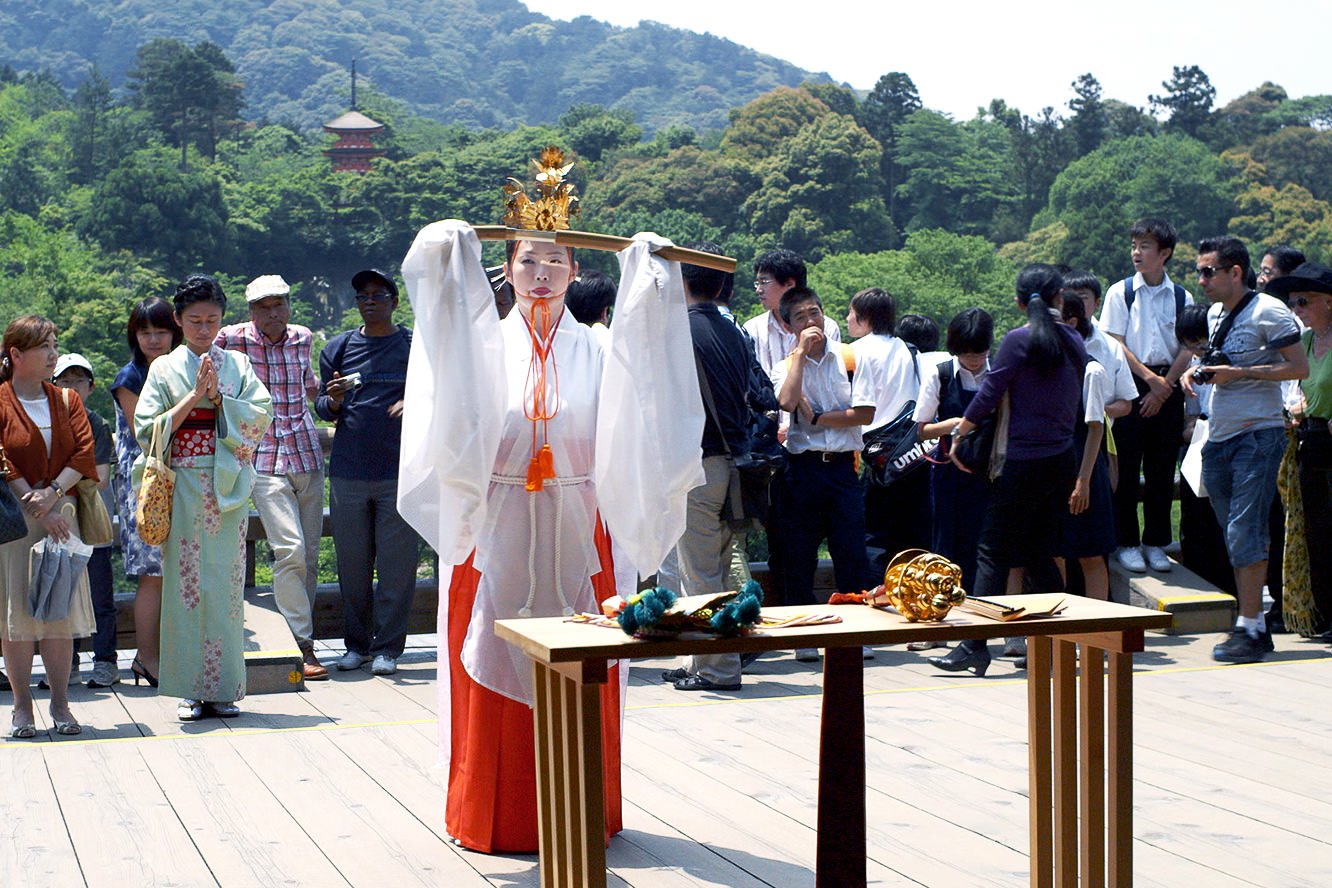
Dedicatory dance
This stage was originally designed as a setting for a variety of traditional performing arts dedicated to the Kannon, the principal image of Kiyomizu-dera Temple. From old times, ceremonial court music, Noh plays, Kyogen comedies, Kabuki performances, and other performing arts have been offered on this stage. Though it is famous for its outstanding view, the stage is intended as a place to worship the Kannon enshrined in the nainaijin (the innermost sanctuary) in the Main Hall, with one’s back to the landscape. Performances are dedicated here on special religious occasions even today.
THE ARCHITECTURE OF THE MAIN HALL
THE ARCHITECTURE OF
THE MAIN HALL
-
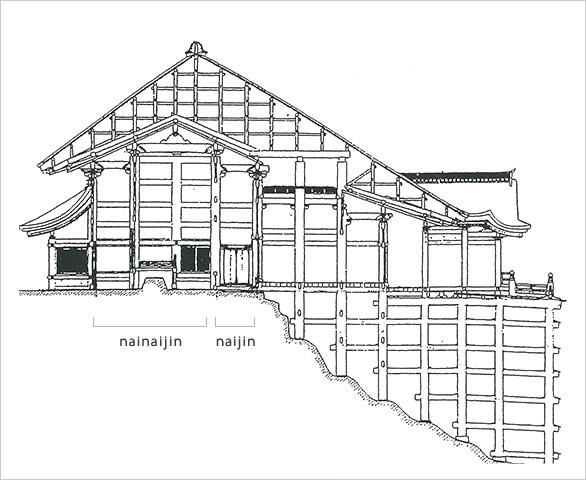
-
The Main Hall has a hipped roof (Yosemune-zukuri) with a hinoki (Japanese cypress) bark thatch, boasting an exquisite curvature. Many traces of palaces and residences of the Heian Period aristocracy can be seen in this architecture. Inside the Main Hall, the space is divided by huge round columns into three areas: gejin/raido (the outer sanctuary), naijin (the inner sanctuary), and nainaijin (the innermost sanctuary). As nainaijin is the most sacred of the three, the principal image of the temple is enshrined there. When worshiping the Kannon, walk through the corridor on the south side of the gejin.
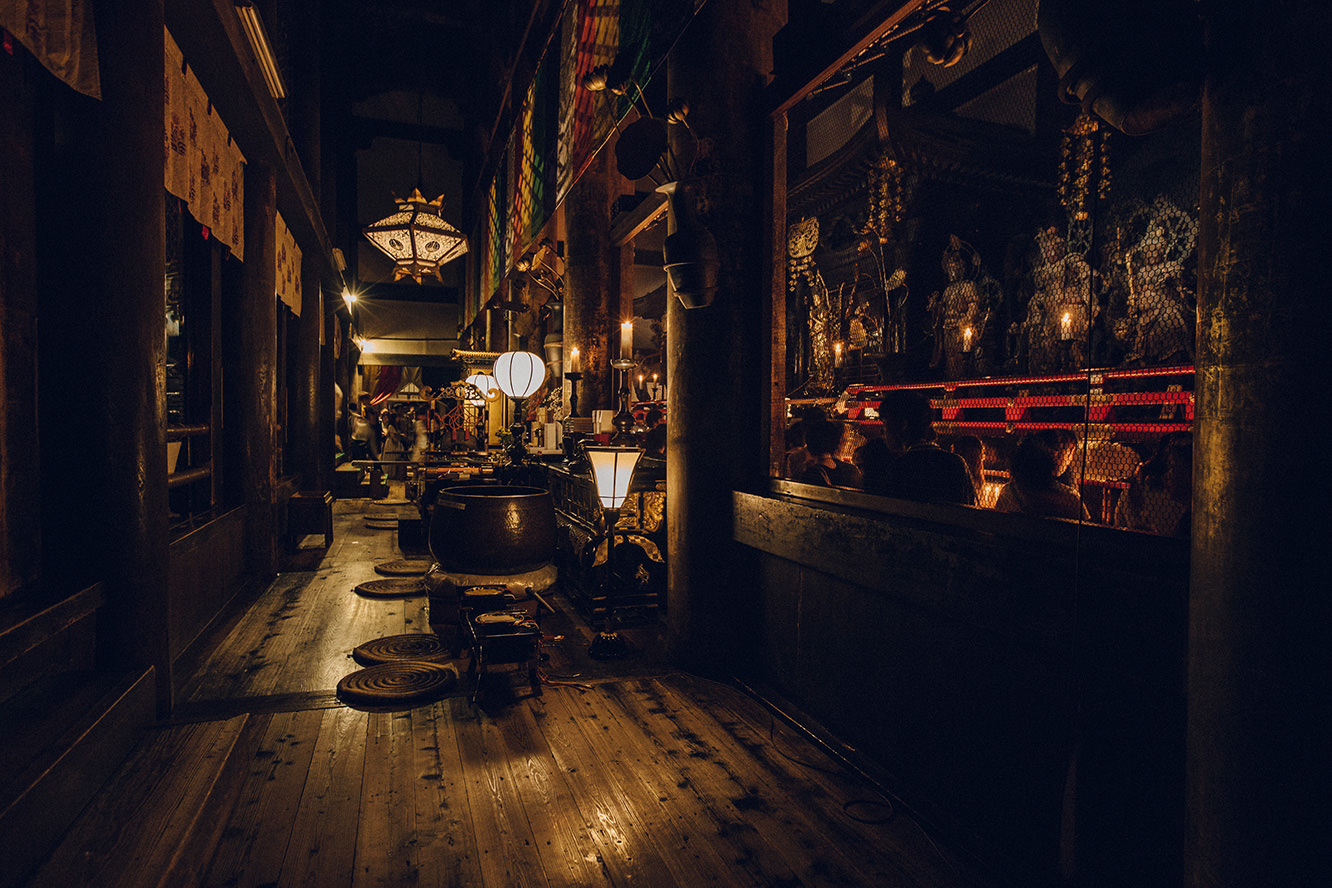
naijin (the inner sanctuary)
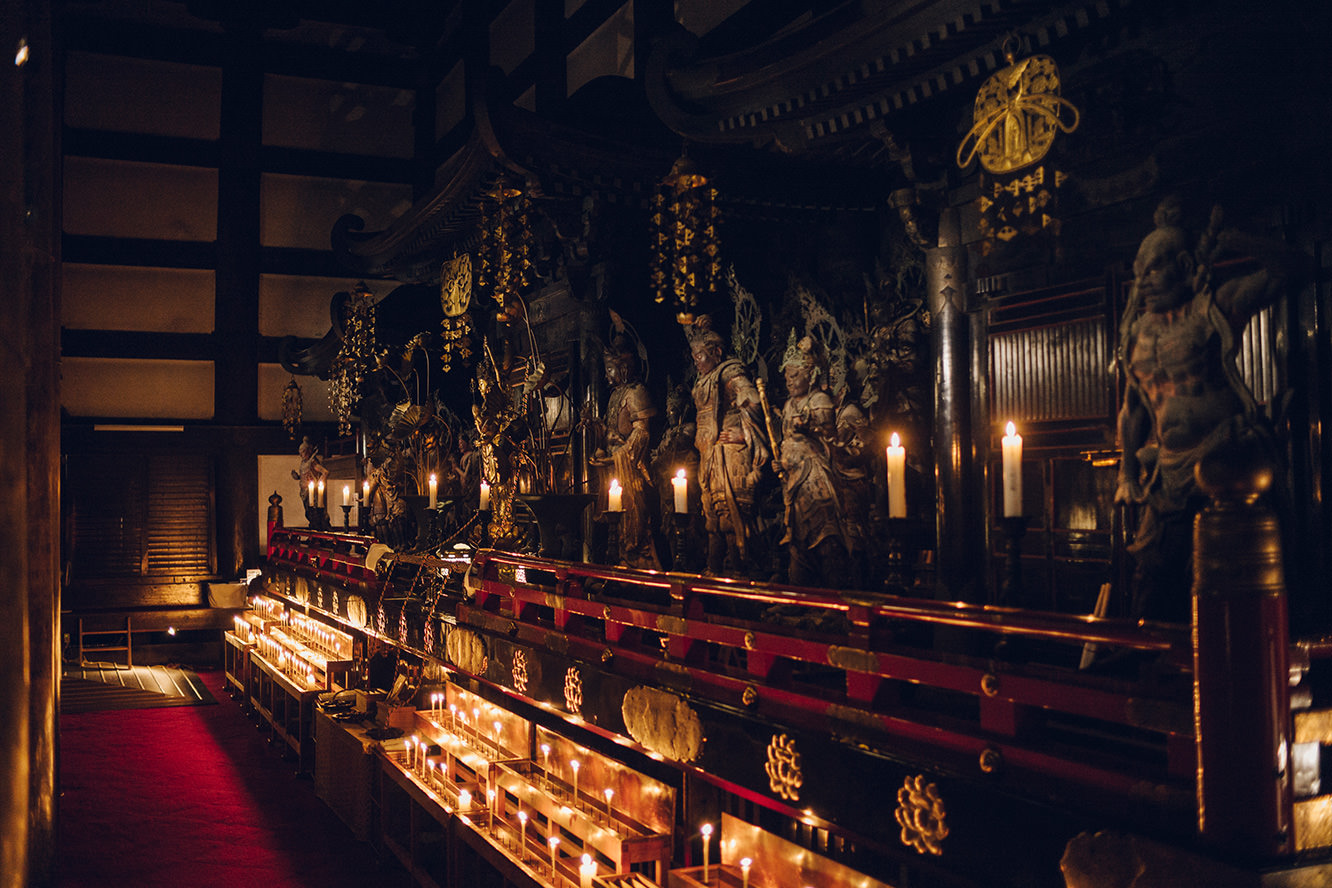
nainaijin (the innermost sanctuary)
Although naijin and nainaijin are usually closed to the public, visitors are allowed to enter nainaijin on special occasions such as the Thousand-day Pilgrimage and make a prayer in the presence of the statue of Kannon.
THE TEMPLE OFFERS A STUNNING CITYSCAPE OF KYOTO
